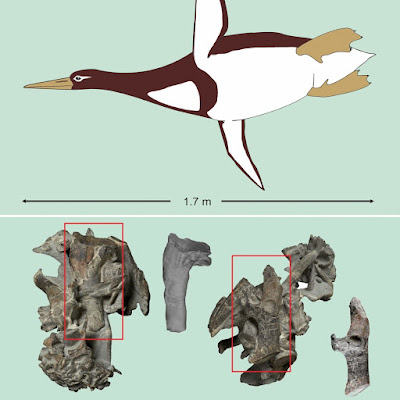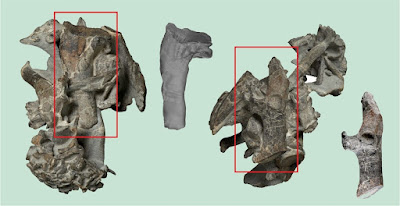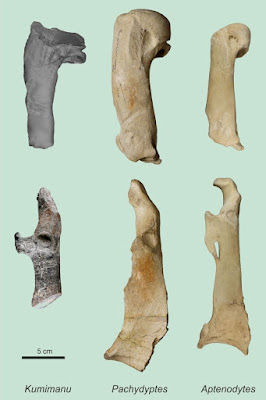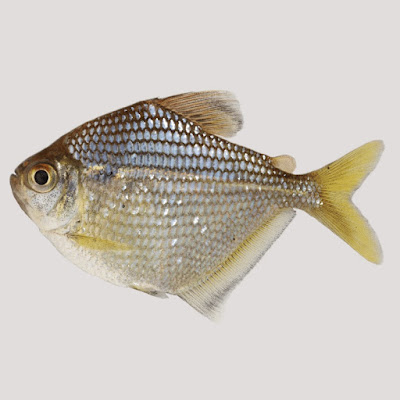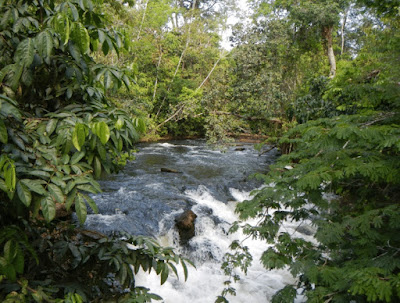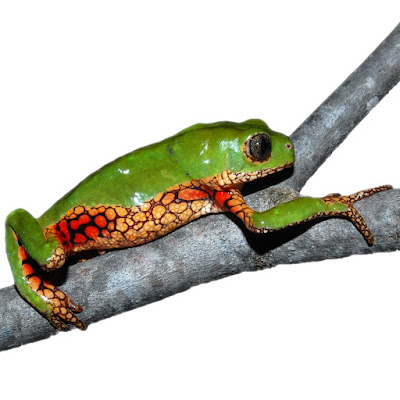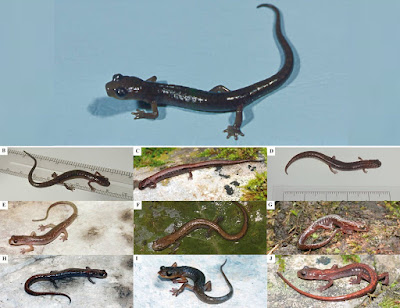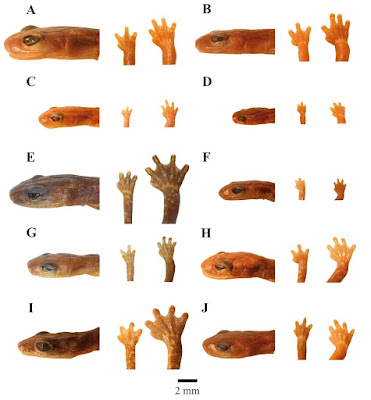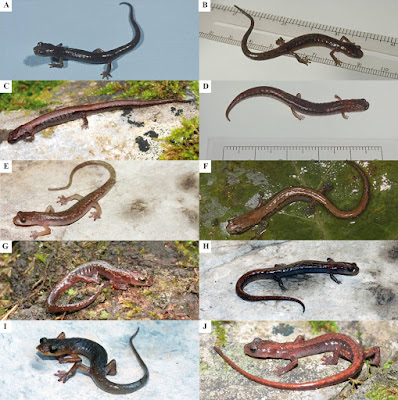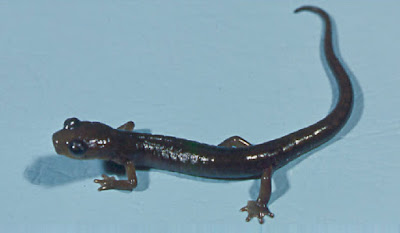[Most Recent Entries] [Calendar View]
Monday, December 18th, 2017
| Time | Event | ||||||
| 12:32a | [PaleoOrnithology • 2017] Kumimanu biceae • A Paleocene Penguin from New Zealand Substantiates Multiple Origins of Gigantism in Fossil Sphenisciformes
Abstract One of the notable features of penguin evolution is the occurrence of very large species in the early Cenozoic, whose body size greatly exceeded that of the largest extant penguins. Here we describe a new giant species from the late Paleocene of New Zealand that documents the very early evolution of large body size in penguins. Kumimanu biceae, n. gen. et sp. is larger than all other fossil penguins that have substantial skeletal portions preserved. Several plesiomorphic features place the new species outside a clade including all post-Paleocene giant penguins. It is phylogenetically separated from giant Eocene and Oligocene penguin species by various smaller taxa, which indicates multiple origins of giant size in penguin evolution. That a penguin rivaling the largest previously known species existed in the Paleocene suggests that gigantism in penguins arose shortly after these birds became flightless divers. Our study therefore strengthens previous suggestions that the absence of very large penguins today is likely due to the Oligo-Miocene radiation of marine mammals. Systematic paleontology Aves Linnaeus, 1758 Sphenisciformes Sharpe, 1891 Kumimanu biceae, n. gen. et sp. Holotype. NMNZ S.45877: partial skeleton of a single individual including cranial end of left scapula, incomplete right coracoid, cranialmost portion of sternum, partial left humerus, incomplete proximal end of left ulna, right femur, right tibiotarsus lacking proximal end, partial synsacrum, three vertebrae, and various bone fragments. Etymology. From kumi (Maori), a large mythological monster, and manu (Maori), bird. The species epithet honors Beatrice (“Bice”) A. Tennyson, the mother of AJDT, who fostered his interest in natural history (pronounced “bee-chee-ae”). Type locality and horizon. Hampden Beach, Otago, New Zealand (NZ Fossil Record Number J42/f0956; precise locality information is recorded at NMNZ); Moeraki Formation, late Paleocene (late Teurian, local stratigraphic level NZP522, which has an absolute age of 55.5.-59.5 million years23; a matrix sample taken from the fossil (GNS Science sample L29126) contained a specimen of the dinoflagellate Palaeocystodinium australinum and an unnamed dinoflagellate taxon that support a Teurian age for this sample; C. Clowes, pers. comm.). Diagnosis. A very large-sized sphenisciform species, which is characterized by proximodistally low and widely spaced condyles of the tibiotarsus. Distinguished from the late Paleocene Crossvallia and all post-Paleocene Sphenisciformes of which humeri are known in the dorsoventrally narrower humerus shaft, with ratio of maximum width of proximal end of humerus to minimum width of shaft being 2.4 (less than this value in Crossvallia and all post-Paleocene Sphenisciformes of which the humerus is known). Distinguished from Waimanu tuatahi in having the bicipital crest of humerus not forming a distally directed bulge. Distinguished from Waimanu manneringi (the humerus of which is unknown) in having the tibiotarsus with proximodistally lower and more widely spaced condyles. Gerald Mayr, R. Paul Scofield, Vanesa L. De Pietri and Alan J. D. Tennyson. 2017. A Paleocene Penguin from New Zealand substantiates multiple origins of gigantism in fossil Sphenisciformes. Nature Communications. 8, Article number: 1927. DOI: 10.1038/s41467-017-01959-6 Giant Prehistoric Penguins Once Swam Off The Coast Of New Zealand houstonpublicmedia.org/npr/2017/12/12/57 A giant human-sized ancient penguin has been discovered ibt.uk/A6vYD Ancient man-sized penguin found in New Zealand beach zmescience.com/science/news-science/man-s 「怪物」サイズのペンギン、ニュージーランドで化石発見 afpbb.com/articles/-/3155164?pid=1963613 | ||||||
| 12:44a | [Ichthyology • 2017] Brachychalcinus reisi • A New Species of Brachychalcinus (Characiformes: Characidae) from the rio Xingu basin, Serra do Cachimbo, Brazil
Abstract Brachychalcinus reisi, a new species of characid fish, is described from the rio Curuá, tributary of rio Iriri, rio Xingu basin, Serra do Cachimbo, Pará State, Brazil. The new species can be distinguished from its congeners by the presence of a series of longitudinal black wavy stripes on the entire body and by a lower number of longitudinal scale rows between dorsal-fin origin and lateral line (7–8 vs. 8–12). Additionally, the new species differs from B. copei, B. parnaibae, and B. retrospina by the lower number of branched dorsal-fin rays (9 vs.10). This is the first description of a new species of the subfamily since the revisionary study of Stethaprioninae, published almost 30 years ago. Keywords: Pisces, Stethaprioninae, Neotropical region, freshwater fishes, taxonomy, Amazon
Brachychalcinus reisi new species Etymology. The specific name reisi is in honor of Roberto Esser dos Reis, for his great contributions to the knowledge of the Stethaprioninae and the Neotropical ichthyology as a whole. A genitive noun.
James R. Garcia-Ayala, Willian M. Ohara, Murilo N. L. Pastana and Ricardo C. Benine. 2017. A New Species of Brachychalcinus (Characiformes: Characidae) from the rio Xingu basin, Serra do Cachimbo, Brazil. Zootaxa. 4362(4); 564–574. DOI: 10.11646/zootaxa.4362.4.5 | ||||||
| 9:00a | [Herpetology • 2017] Evolutionarily Significant Units of the Critically Endangered Leaf Frog Pithecopus ayeaye (Anura, Phyllomedusidae) are Not Effectively Preserved by the Brazilian Protected Areas Network
Abstract Protected areas (PAs) are essential for biodiversity conservation, but their coverage is considered inefficient for the preservation of all species. Many species are subdivided into evolutionarily significant units (ESUs) and the effectiveness of PAs in protecting them needs to be investigated. We evaluated the usefulness of the Brazilian PAs network in protecting ESUs of the critically endangered Pithecopus ayeaye through ongoing climate change. This species occurs in a threatened mountaintop ecosystem known as campos rupestres. We used multilocus DNA sequences to delimit geographic clusters, which were further validated as ESUs with a coalescent approach. Ecological niche modeling was used to estimate spatial changes in ESUs’ potential distributions, and a gap analysis was carried out to evaluate the effectiveness of the Brazilian PAs network to protect P. ayeaye in the face of climate changes. We tested the niche overlap between ESUs to gain insights for potential management alternatives for the species. Pithecopus ayeaye contains at least three ESUs isolated in distinct mountain regions, and one of them is not protected by any PA. There are no climatic niche differences between the units, and only 4% of the suitable potential area of the species is protected in present and future projections. The current PAs are not effective in preserving the intraspecific diversity of P. ayeaye in its present and future range distributions. The genetic structure of P. ayeaye could represent a typical pattern in campos rupestres endemics, which should be considered for evaluating its conservation status. KEYWORD: Sapproximate Bayesian computation, campos rupestres, conservation genetics, ecological niche modeling, niche overlap, statistical phylogeography
Rafael Félix de Magalhães, Priscila Lemes, Arley Camargo, Ubirajara Oliveira, Reuber Albuquerque Brandão, Hans Thomassen, Paulo Christiano de Anchietta Garcia, Felipe Sá Fortes Leite and Fabrício Rodrigues Santos. 2017. Evolutionarily Significant Units of the Critically Endangered Leaf Frog Pithecopus ayeaye (Anura, Phyllomedusidae) are Not Effectively Preserved by the Brazilian Protected Areas Network. Ecology and Evolution. 7(21); 8812–8828. DOI: 10.1002/ece3.3261 | ||||||
| 6:10p | [Herpetology • 2017] Chiropterotriton chico • A New Terrestrial Species of Chiropterotriton (Caudata: Plethodontidae) from central Mexico Abstract Chiropterotriton is a relatively small genus that comprises 15 species with great morphological and ecological diversity. In previous studies, molecular data provided evidence for a considerable number of species that remain undescribed. In this study, we describe one new species, Chiropterotriton chico sp. nov. based on molecular and morphological characters. We present mtDNA phylogenetic analyses using Bayesian inference and maximum likelihood that include all described and several undescribed species. Morphometric data from eight recognized species provide evidence for the distinctiveness of the new taxon. Description of this new species adds to the already high salamander diversity of the state of Hidalgo, which is an important area for the diversification of the genus. Keywords: salamanders, bolitogossines, morphology, taxonomy, Hidalgo Chiropterotriton chico sp. nov. El Chico Salamander | Salamandra de El Chico Chiropterotriton multidentata (part): Taylor, 1944. Chiropterotriton multidentata (part): Taylor, 1944. Chiropterotriton cf multidentatus (part): Rabb, 1958; Darda, 1994. Chiropterotriton sp. 15: Parra-Olea, 2003; Rovito & Parra-Olea, 2015 Habitat and range. This species is only known from Parque Nacional El Chico in Hidalgo, Mexico .... It is unlikely to occur more widely, because surrounding areas have been extensively surveyed. Etymology. The species name chico is in reference to the national park where the species occurs. Parque Nacional El Chico in Hidalgo, Mexico has been a protected area since 1922. The species name is used as an invariable noun in apposition to the generic name. Remarks. This species was previously considered as conspecific with C. multidentatus and occurs in sympatry with C. dimidiatus and Aquiloeurycea cephalica. Likewise, Isthmura bellii has been collected very near sites where C. chico was once common ( MVZAbout MVZ 118953, 118954, 128978), but it is unknown if the two species occur in syntopy. Mirna G. García-Castillo, Sean M. Rovito, David B. Wake and Gabriela Parra-Olea. 2017. A New Terrestrial Species of Chiropterotriton (Caudata: Plethodontidae) from central Mexico. Zootaxa. 4363(4);489–505. DOI: 10.11646/zootaxa.4363.4.2 Una nueva especie terrestre de Chiropterotriton (Caudata: Plethodontidae) del centro de México. RESUMEN. “Chiropterotriton es un género relativamente pequeño que comprende 15 especies con gran diversidad morfológica y ecológica. En estudios previos, los datos moleculares proporcionaron evidencia para un número considerable de especies que permanecen sin describir. En este estudio, describimos una nueva especie, Chiropterotriton chico sp. nov. basada en caracteres moleculares y morfológicos. Presentamos análisis filogenéticos de mtDNA usando inferencia Bayesiana y máxima verosimilitud que incluyen todas las especies descritas y varias especies no descritas. Los datos morfométricos de ocho especies reconocidas proporcionan evidencia del carácter distintivo del nuevo taxón. La descripción de esta nueva especie se suma a la ya alta diversidad de salamandras del estado de Hidalgo, que es un área importante para la diversificación del género”. |
| << Previous Day |
2017/12/18 [Calendar] |
Next Day >> |
